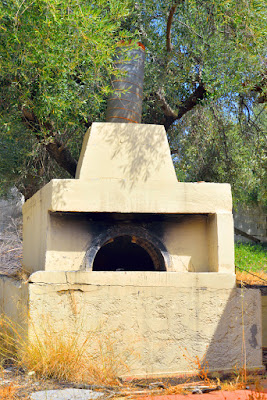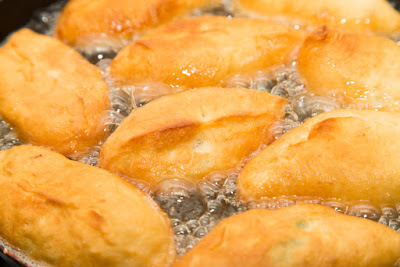The History of the Oven
One piece of equipment crucial to pretty much any restaurant is the oven. Ovens have come a long way since ancient times. Before the first oven was invented, people had to cook over open fires. Today's ovens are energy efficient and temperature controlled. In today's blog, Fast Fix LLC is going to take you through the timeline of the evolution of the oven.
The first oven recorded in history was invented in 1490. It was built in Alsace, France and was made entirely of brick and tile, including the flue. While there may have been others before this, the French oven is the first to be recorded. Simple ovens were used by the ancient Greeks for making bread and other baked goods. By the middle ages, taller brick and mortar hearths, often with chimneys were being built. Often times, the food to be cooked was hung over the flames in a large metal cauldron.
After the first oven was created, inventors began working to make improvements to the design. The primary concern was containing the smoke that was being produced. Fire chambers were invented to help contain the wood fire, and holes were built into the top of the chambers so that cooking pots could be used rather than the cauldrons. The 1735 Castrol stove (aka stew stove) featured a design that completely contained the fire, and had several openings covered by iron plates with holes.
In 1728, cast iron stoves began increasing in popularity. The Germans designed these ovens called Five-plate or Jamb stoves. During the early 1800s, Count Rumford invented an iron stove that not only heated multiple pots, but that also could be adjusted to heat each at a different temperature. The stove was designed for very large working kitchens. Due to the fact that Rumford's design was too large for any residential kitchen, inventors continued to work on the design. Patented in 1834, Stewart's Oberlin iron stove was successful and compact.

Frans Wilhelm Lindqvist designed the first sootless kerosene oven in the early 1800s. Then in 1833, Jordan Mott was the first to invent a practical coal oven. Mott's oven was known as the baseburner. Ventilation was utilized to burn the coal efficiently. The coal oven was cylindrical and made of heavy cast iron with a hole in the top, enclosed by an iron ring.
James Sharp, a British inventor, patented a gas oven in 1826. This was the first semi-successful gas oven to appear on the market. By the 1920s, gas ovens were found in most households. They featured top burners and interior ovens. The evolution of gas stoves however, was stunted by the need for gas lines that could furnish gas to households. During the 1910s, gas stoves appeared with enamel coating that made them easier to clean.
The first patent for an electric oven was given to William Hadaway in 1896. (He also designed the first Westinghouse toaster.) However, some historians credit Canadian Thomas Ahearn with inventing the first electric oven in 1882. As electricity technology improved, electric ovens became more prominent. Up until the late 1920s and early 1930s, electric ovens hadn't even begun competing with gas ovens. However, electric ovens were available as early as the 1890s.
Today, there are a variety of oven options available, and while in the past they were looking to make ovens more compact for individual households, the industry now thrives on also making large industrial ovens fit for a commercial kitchen. From stainless steel double wall ovens to gas and electric ranges, the oven has definitely improved over the years. Just imagine if restaurants had to cook all their food over an open fire!
For all your Western Illinois and Missouri restaurant equipment repair needs, from ovens to refrigeration units, we've got you covered. Fast Fix LLC is known for honest, reliable, hardworking and professionally trained technicians. We offer both 24/7 emergency service, as well as warranty work for a variety of manufacturers. Contact us at 573-544-0456; one call does it all!
Fast Fix LLC. Restaurant Services
9403 County Road 154
Auxvasse, MO 65231
Phone: 573-254-3748
St. Louis Customers: 636-FASTFIX
Website: www.FastFixLLC.com
"Like" us on Facebook
"Follow" us on Twitter
"Follow" us on LinkedIn
"Follow" us on Google
The First Ovens
The first oven recorded in history was invented in 1490. It was built in Alsace, France and was made entirely of brick and tile, including the flue. While there may have been others before this, the French oven is the first to be recorded. Simple ovens were used by the ancient Greeks for making bread and other baked goods. By the middle ages, taller brick and mortar hearths, often with chimneys were being built. Often times, the food to be cooked was hung over the flames in a large metal cauldron.
Wood Burning Stoves
After the first oven was created, inventors began working to make improvements to the design. The primary concern was containing the smoke that was being produced. Fire chambers were invented to help contain the wood fire, and holes were built into the top of the chambers so that cooking pots could be used rather than the cauldrons. The 1735 Castrol stove (aka stew stove) featured a design that completely contained the fire, and had several openings covered by iron plates with holes.
Cast Iron Stoves
In 1728, cast iron stoves began increasing in popularity. The Germans designed these ovens called Five-plate or Jamb stoves. During the early 1800s, Count Rumford invented an iron stove that not only heated multiple pots, but that also could be adjusted to heat each at a different temperature. The stove was designed for very large working kitchens. Due to the fact that Rumford's design was too large for any residential kitchen, inventors continued to work on the design. Patented in 1834, Stewart's Oberlin iron stove was successful and compact.

Coal & Kerosene Stoves
Frans Wilhelm Lindqvist designed the first sootless kerosene oven in the early 1800s. Then in 1833, Jordan Mott was the first to invent a practical coal oven. Mott's oven was known as the baseburner. Ventilation was utilized to burn the coal efficiently. The coal oven was cylindrical and made of heavy cast iron with a hole in the top, enclosed by an iron ring.
Gas Stoves
James Sharp, a British inventor, patented a gas oven in 1826. This was the first semi-successful gas oven to appear on the market. By the 1920s, gas ovens were found in most households. They featured top burners and interior ovens. The evolution of gas stoves however, was stunted by the need for gas lines that could furnish gas to households. During the 1910s, gas stoves appeared with enamel coating that made them easier to clean.
Electric Ovens
The first patent for an electric oven was given to William Hadaway in 1896. (He also designed the first Westinghouse toaster.) However, some historians credit Canadian Thomas Ahearn with inventing the first electric oven in 1882. As electricity technology improved, electric ovens became more prominent. Up until the late 1920s and early 1930s, electric ovens hadn't even begun competing with gas ovens. However, electric ovens were available as early as the 1890s.
Today, there are a variety of oven options available, and while in the past they were looking to make ovens more compact for individual households, the industry now thrives on also making large industrial ovens fit for a commercial kitchen. From stainless steel double wall ovens to gas and electric ranges, the oven has definitely improved over the years. Just imagine if restaurants had to cook all their food over an open fire!
For all your Western Illinois and Missouri restaurant equipment repair needs, from ovens to refrigeration units, we've got you covered. Fast Fix LLC is known for honest, reliable, hardworking and professionally trained technicians. We offer both 24/7 emergency service, as well as warranty work for a variety of manufacturers. Contact us at 573-544-0456; one call does it all!
Fast Fix LLC. Restaurant Equipment Service & Repair -
One Call Does It All!
Fast Fix LLC. Restaurant Services
9403 County Road 154
Auxvasse, MO 65231
Phone: 573-254-3748
St. Louis Customers: 636-FASTFIX
Website: www.FastFixLLC.com
"Like" us on Facebook
"Follow" us on Twitter
"Follow" us on LinkedIn
"Follow" us on Google






Comments
Post a Comment